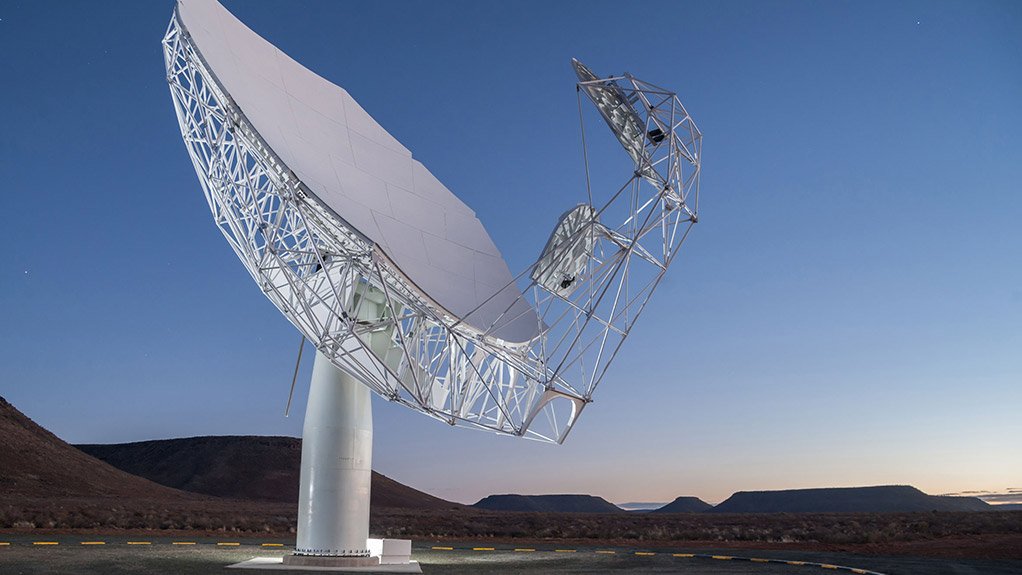National Metrology Institute promises much better time accuracy for SKA SA
The National Metrology Institute of South Africa (NMISA) has agreed to massively improve its time reference precision in order to support the South African element of the international Square Kilometre Array (SKA) radio telescope. This agreement was embodied in a memorandum of understanding (MoU) signed with SKA South Africa (SKA SA) on Friday.
In terms of the MoU, NMISA will refine its time reference by a factor of more than 1 000, from about 5 000 nanoseconds (ns) today to only about 4 ns. A nanosecond is a billionth of a second and 4 ns represents cutting-edge accuracy.
NMISA is responsible for the maintenance of the country’s national measurement standards, including those for time and frequency. SKA SA is the organisation responsible for South Africa’s participation in the SKA and for the country’s MeerKAT radio telescope array, which will be a precursor to the SKA.
“Cutting-edge science must be based on cutting-edge measurement accuracy,” highlighted NMISA Electricity and Magnetism Division director Natasha Nel-Sakharova. “One cannot claim what you cannot measure. This cooperation between NMISA and SKA South Africa will enhance South Africa’s position as the best time keeping facility in Africa and make it one of the best in the world.”
“Time and frequency is a critical [factor] in the observation of celestial bodies via radio techniques,” noted SKA SA Time and Frequency Systems manager Dr Johan Burger. As both MeerKAT and the SKA are arrays of antennas, the signals from each antenna will reach the telescope data processing centre at slightly different times, because of the different distances from the antennas to the centre. These signals have to be correlated to allow the creation of a single image. This correlation requires precise “time tagging” of all of the signals. The frequencies of all the antennas have also to be precisely aligned. The final result will be a single high resolution image.
Implementing the MoU will require NMISA to invest in new equipment and carry out research. It will, for example, have to acquire additional caesium atomic clocks and also obtain active hydrogen maser atomic clocks. Research will have to be done on techniques to transfer time signals from the NMISA clock room through commercial telecommunications fibres to the MeerKAT/SKA in the Karoo.
Comments
Announcements
What's On
Subscribe to improve your user experience...
Option 1 (equivalent of R125 a month):
Receive a weekly copy of Creamer Media's Engineering News & Mining Weekly magazine
(print copy for those in South Africa and e-magazine for those outside of South Africa)
Receive daily email newsletters
Access to full search results
Access archive of magazine back copies
Access to Projects in Progress
Access to ONE Research Report of your choice in PDF format
Option 2 (equivalent of R375 a month):
All benefits from Option 1
PLUS
Access to Creamer Media's Research Channel Africa for ALL Research Reports, in PDF format, on various industrial and mining sectors
including Electricity; Water; Energy Transition; Hydrogen; Roads, Rail and Ports; Coal; Gold; Platinum; Battery Metals; etc.
Already a subscriber?
Forgotten your password?
Receive weekly copy of Creamer Media's Engineering News & Mining Weekly magazine (print copy for those in South Africa and e-magazine for those outside of South Africa)
➕
Recieve daily email newsletters
➕
Access to full search results
➕
Access archive of magazine back copies
➕
Access to Projects in Progress
➕
Access to ONE Research Report of your choice in PDF format
RESEARCH CHANNEL AFRICA
R4500 (equivalent of R375 a month)
SUBSCRIBEAll benefits from Option 1
➕
Access to Creamer Media's Research Channel Africa for ALL Research Reports on various industrial and mining sectors, in PDF format, including on:
Electricity
➕
Water
➕
Energy Transition
➕
Hydrogen
➕
Roads, Rail and Ports
➕
Coal
➕
Gold
➕
Platinum
➕
Battery Metals
➕
etc.
Receive all benefits from Option 1 or Option 2 delivered to numerous people at your company
➕
Multiple User names and Passwords for simultaneous log-ins
➕
Intranet integration access to all in your organisation





















